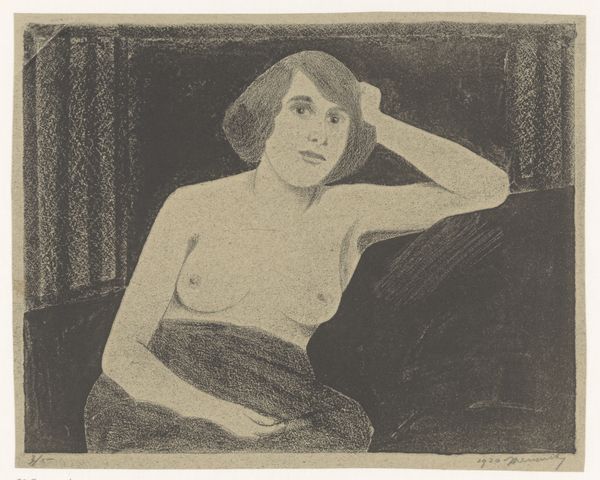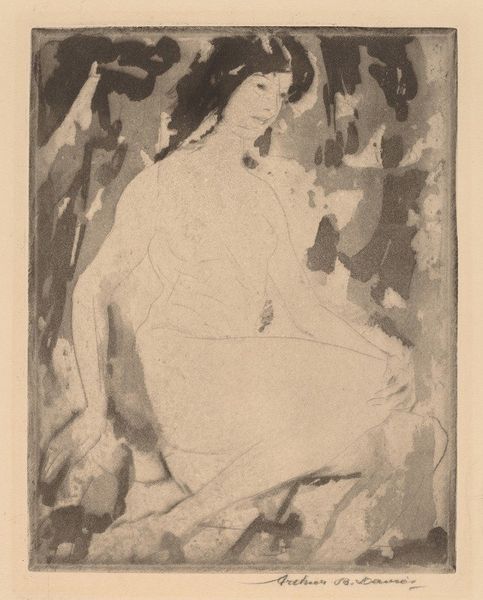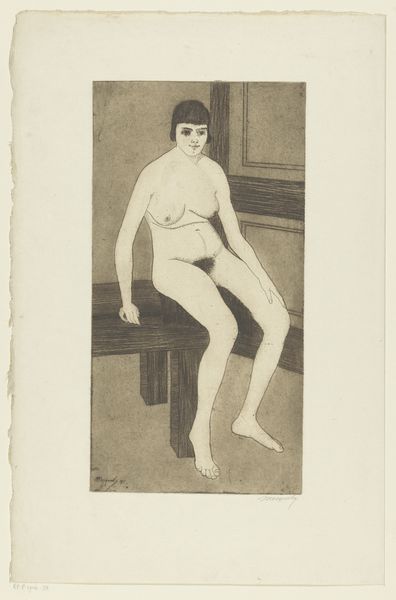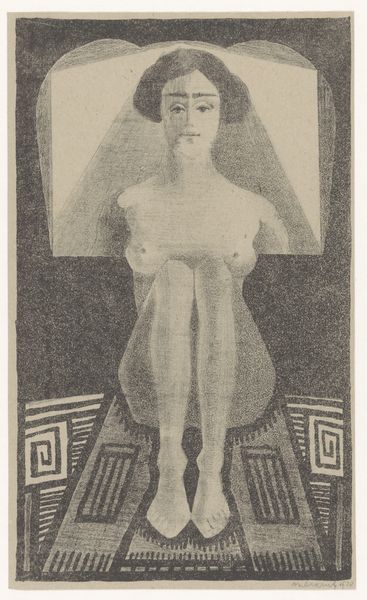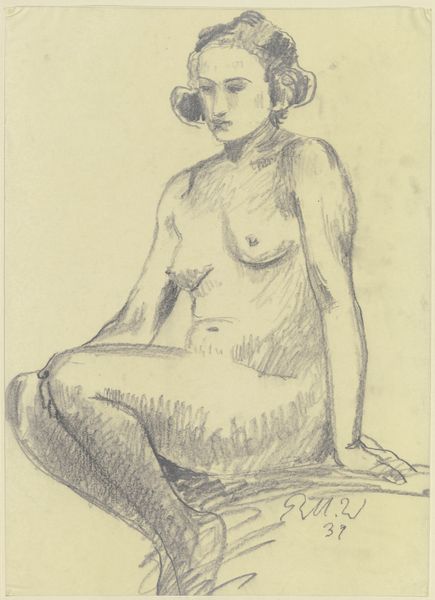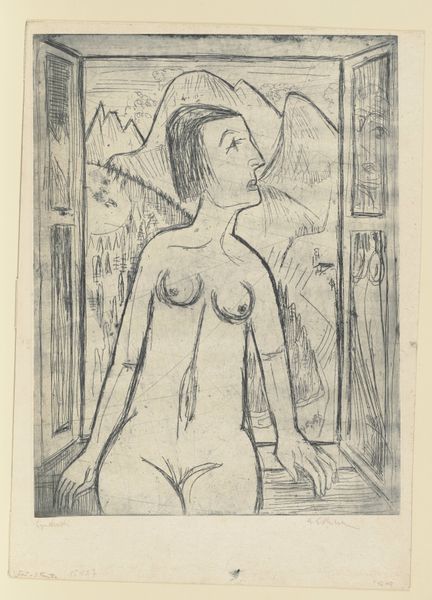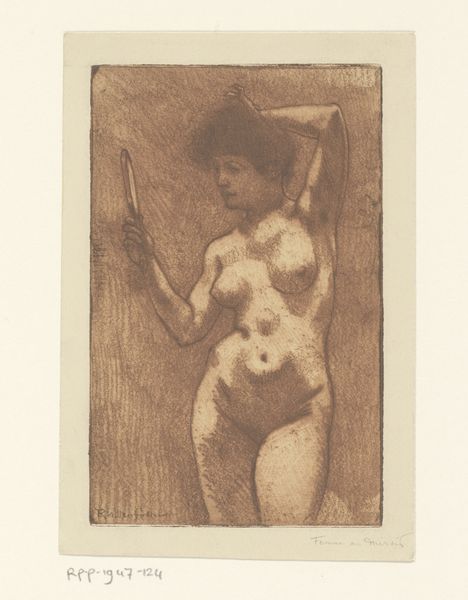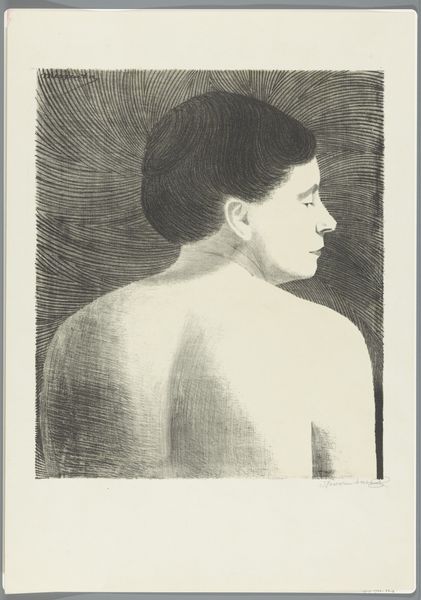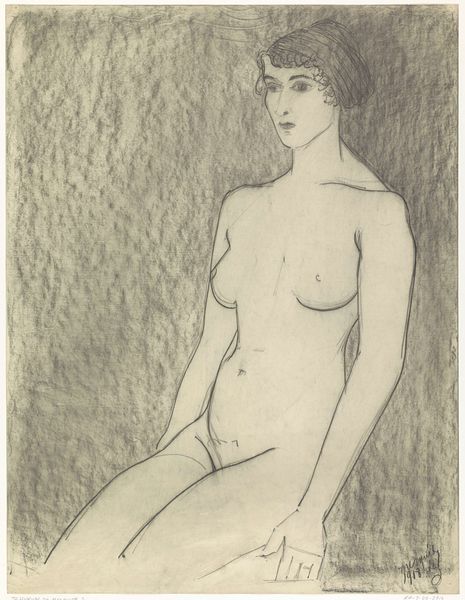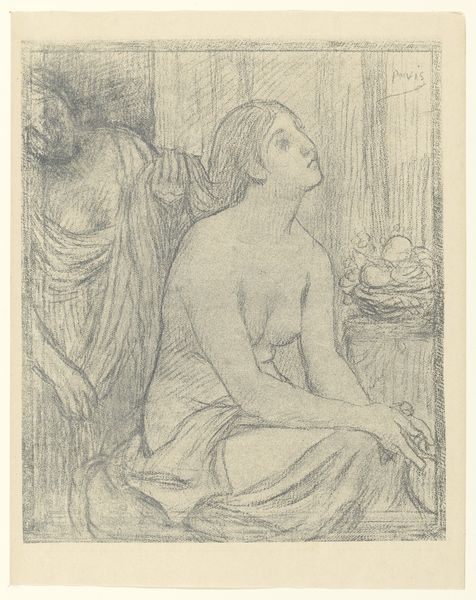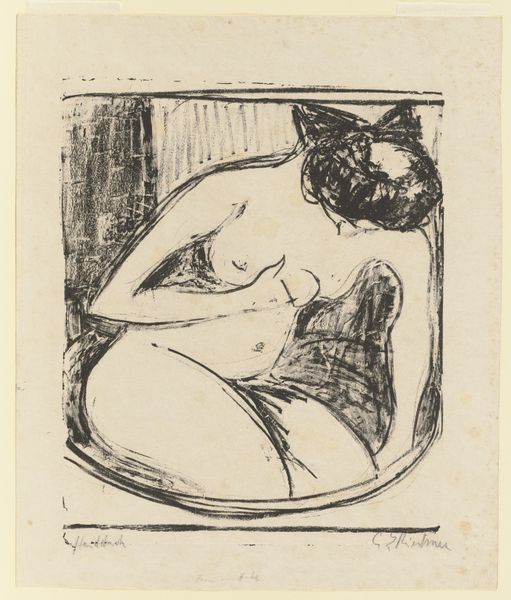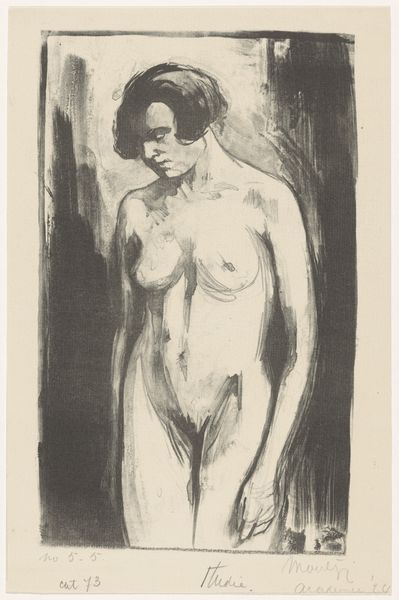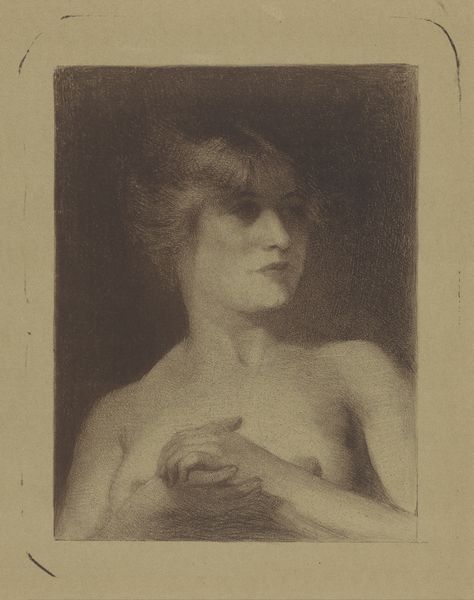
drawing, graphite
#
portrait
#
drawing
#
toned paper
#
pencil sketch
#
figuration
#
expressionism
#
graphite
Dimensions: height 240 mm, width 190 mm
Copyright: Rijks Museum: Open Domain
Curator: Immediately, I'm struck by the intensity, but also the vulnerability radiating from this figure. The composition centers the woman's direct gaze. Editor: Indeed. Samuel Jessurun de Mesquita created "Vrouwentors," or "Women's Torso," in 1920, while navigating a turbulent time in Europe. It is now a highlight in the Rijksmuseum's collection. De Mesquita worked with a combination of graphite and pencil on toned paper. The resulting work delivers remarkable power. Curator: Toned paper provides such an evocative base, allowing the artist to play with light and shadow to craft emotional depth. Editor: Yes, notice the economical lines, creating structure where light pours in. It focuses one's eyes toward her direct, powerful, although vulnerable expression. Curator: The social context heightens the impact. In a world of increasing societal restrictions, particularly on women, the unflinching gaze seems almost defiant, challenging conventions. Editor: Quite the interpretation! The curtains framing the sitter also introduce complex symmetry—the shapes almost mirror the lines and the outline of the subject, as if she's being consumed, in her time, in history, or by another frame? Curator: Exactly! But that brings a discomfort into conversation: is this figure empowered, or constrained by the socio-political circumstances, being framed by an interior and public role? Editor: These layers give the piece a rare narrative pull, one you don't often feel from quick studies of this period. The sitter, we imagine, held power even as De Mesquita sketched her story. Curator: We might never know the specific history of the figure, however the composition draws one to ask new inquiries about female public power. Editor: We've both explored our positions, with our own analysis of her story, haven't we? I have changed my position now: the tonal relationships truly work as an interplay of line, composition, and light! Curator: Ultimately, the portrait embodies not only artistic skill, but perhaps a complex emotional landscape within early 20th century experience. It shows both freedom and its price.
Comments
No comments
Be the first to comment and join the conversation on the ultimate creative platform.
